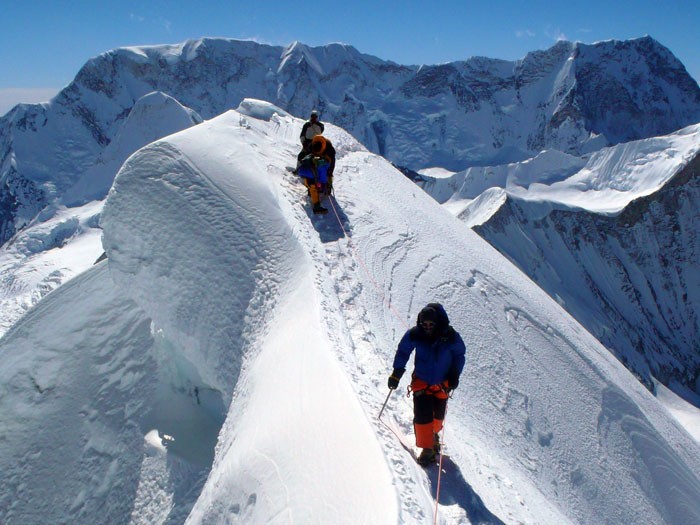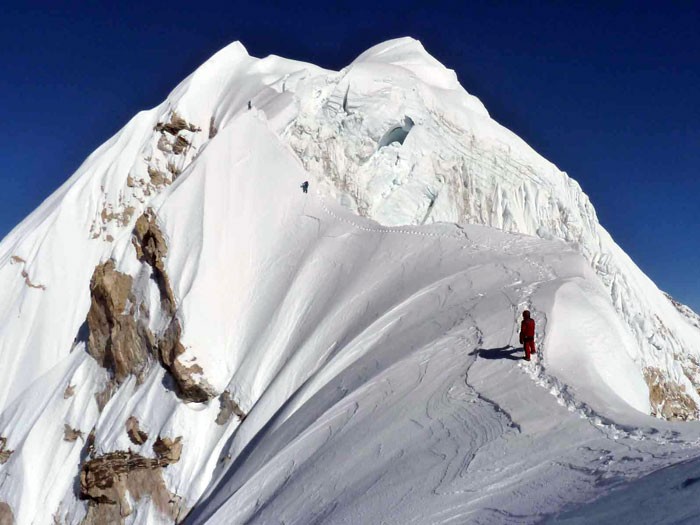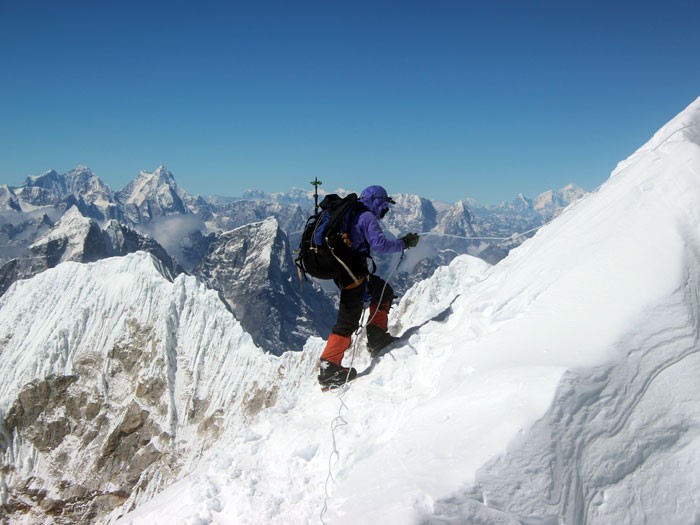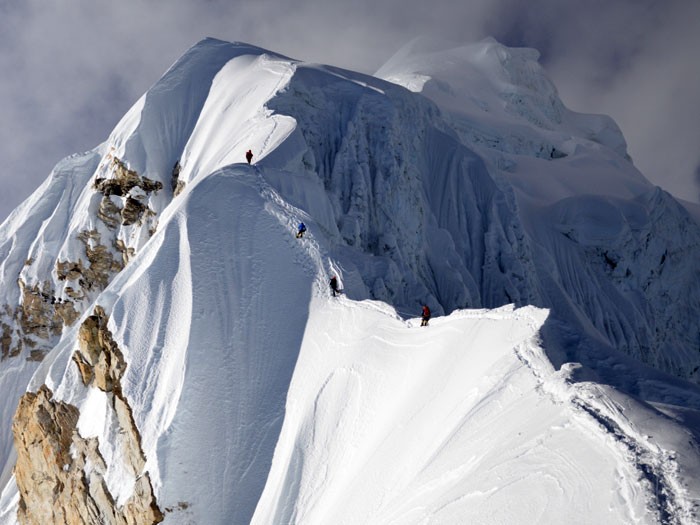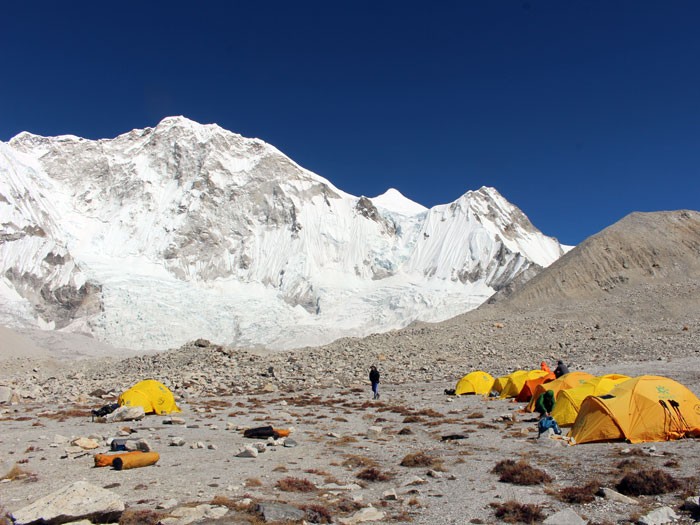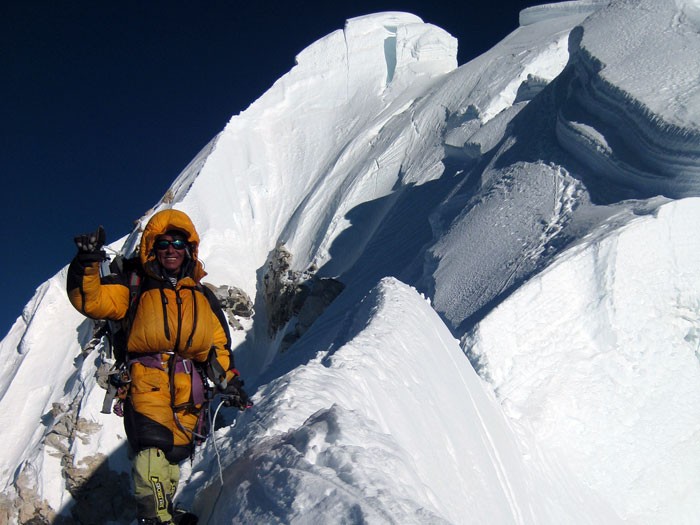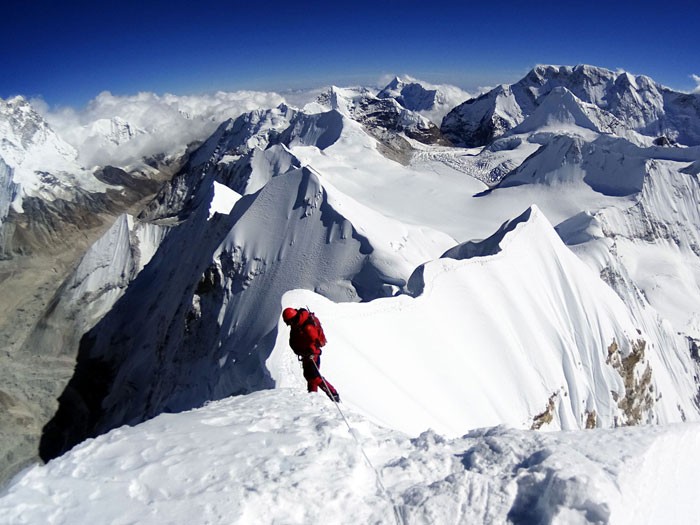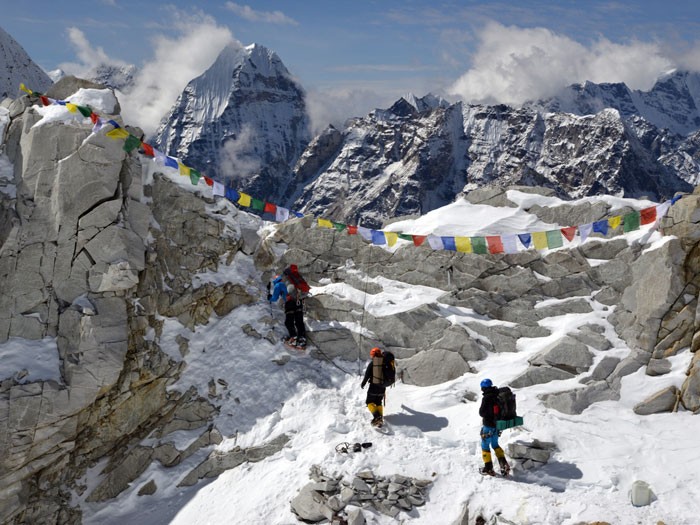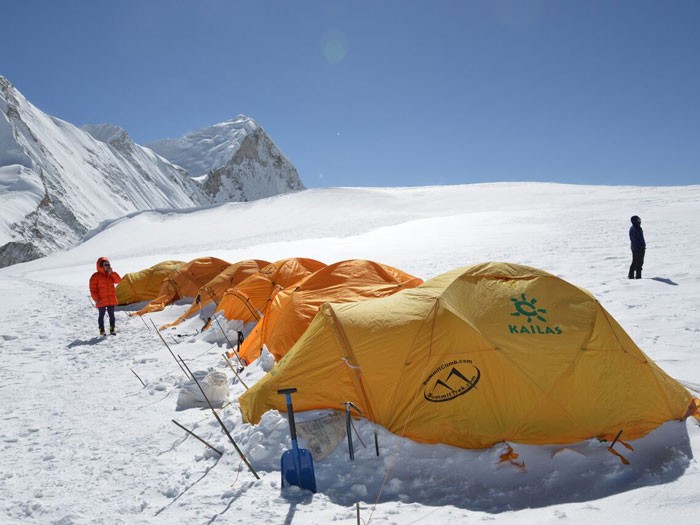Baruntse/Mera Peak climb – the Grand Circle Himalayan Traverse
1) Arrive Kathmandu 1,300 metres (4,265 feet). Stay at hotel.
2) Orientation day, equipment checking, gear shopping and sightseeing in Kathmandu. Stay at hotel.
3) Drive to Salleri town, 2,360 metres (7,740 feet). Large village in the foothills of Everest. Stay at hotel.
4) Drive to Bung village, 1,800 metres (5,904 feet). Entry to Makalu Barun National Park Headquarters. Stay at hotel.
5) Walk to Khiraule, 2,460 metres (8,069 feet). Visit Chambaling Monastery. Sleep in Teahouse or Camp.
6) Walk to Cholemkharka, 3,580 metres (11,742 feet). Beautiful hill farming and yak pastures. Sleep in Teahouse or Camp.
7) Rest day in Cholemkharka, acclimatization hike nearly to 4,000 metres (13,120 feet). Sleep in Teahouse or Camp.
8) Walk to Khola Kharka, 4250 metres (14,000 feet), passing through famous Panch Pokhari (5 Lakes) mountain range. Sleep in Teahouse or Camp.
9) Walk to Kothey, 3,500 metres (11,483 feet), beautiful mountain village surrounded by forest. Sleep in Teahouse.
10) Walk to Tagnag, 4,300 metres (14,108 feet), stunning scenery on the east side of Mera Peak. Sleep in Teahouse.
11) Walk to Khare at 5,000 metres (16,404 feet). High Alpine Village at the starting point for Mera La crossing. Sleep in Teahouse.
12) Rest day at Khare, check equipment, fixed rope training, acclimatization, explore the surrounding area. Sleep in Teahouse.
13) Climb to Mera Peak High Camp, 5,768 metres (18,924 feet). amazing views of Everest and all Himalaya. Camp.
14) Summit Mera Peak, 6,476 metres (21,246 feet), descend to Kongma Dingma in the beautiful remote Hongu Valley, 4,850 metres (15,908 feet). Camp.
15) Very Short Trek to Setho Pokhari, 5,003 metres (16,414 feet). The beautiful Hongu Valley Trek passes massive peaks such as mighty Mt. Chamlang. Camp.
16) Walk to Baruntse basecamp, 5,380 metres (17,646 feet). Basecamp is in a large bowl at the base of the mountain itself.
17) Rest & Acclimatization, Sherpa prayer ceremony (puja).
18) Glacier and fixed rope training on small ice walls near basecamp.
19) Climb to camp 1 on the West Col, 6,126 metres (20,100 feet) using fixed ropes. Stunning views of Baruntse climbing route and massive Mt. Makalu.
20) Very short climb to camp 2 at 6,350 metres (20,828 feet). Camp 2 lies at the base of the Baruntse Ridge.
21) Summit attempt using fixed ropes, 7,129 metres (23,390 feet).
22) Extra day for summit attempt, return to basecamp.
23) Return to basecamp, rest, pack up.
24) Hike through the scenic Panch Pokhari (5 Lakes) valley to base of Amphu Labtsa pass, 5450 metres (17,876 feet). Camp.
25) Cross Amphu Labtsa pass, 5,845 metres (19,177 feet) to Chukkung village, 4,750 metres (15,584 feet). A very beautiful day of climbing and trekking to Khumbu/Everest valley, passing Island Peak. Sleep in teahouse.
26) Walk to Pangboche village 3,985 metres (13,070 feet). Famous Everest base camp trekking route with many lodges and restaurants and beautiful scenery of Mt. Ama Dablam. Sleep in teahouse.
27) Walk to Namche Bazaar, 3,450 metres (11,319 feet). This big village is the capital of the Sherpa people. Teahouse.
28) Walk to Lukla, 2,860 metres (9,383 feet). Village containing the famous airport used for flights between Everest region and Kathmandu. Sleep in teahouse.
29) Flight to Kathmandu. Stay at hotel.
30) Extra day in Kathmandu, in case of delay, and for sightseeing, gift shopping, celebration, saying goodbye to new friends. Stay at hotel.
31) Fly home.

